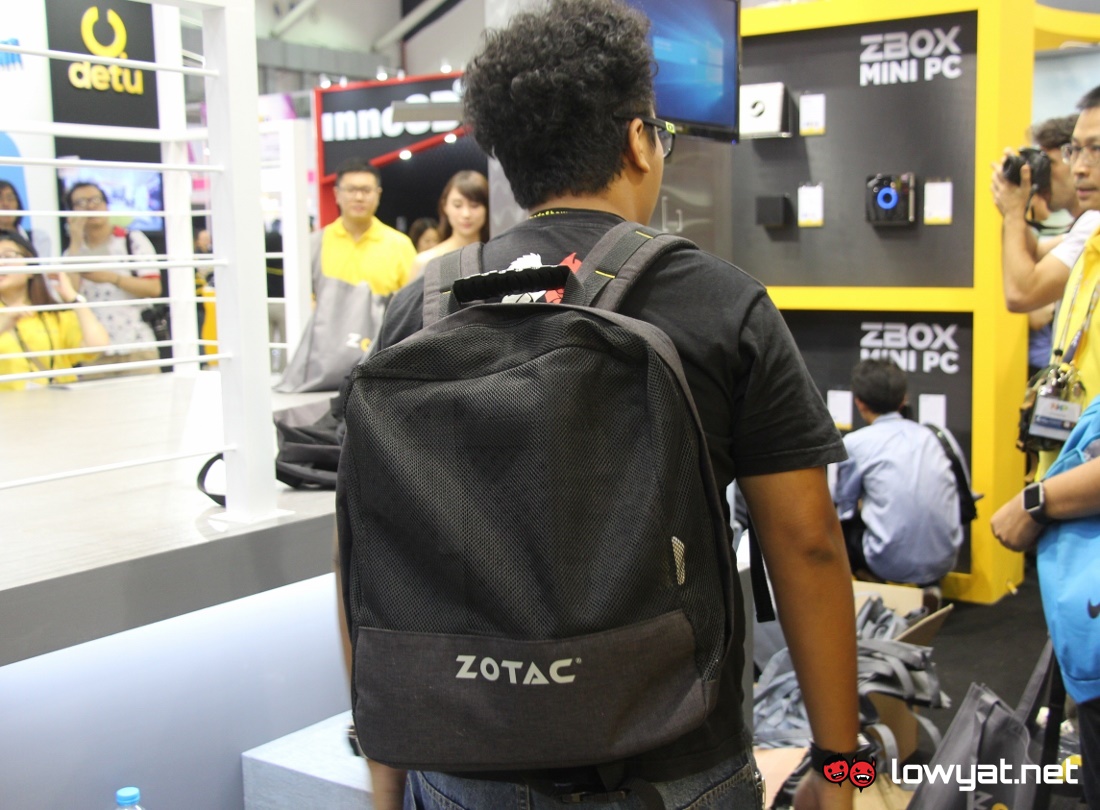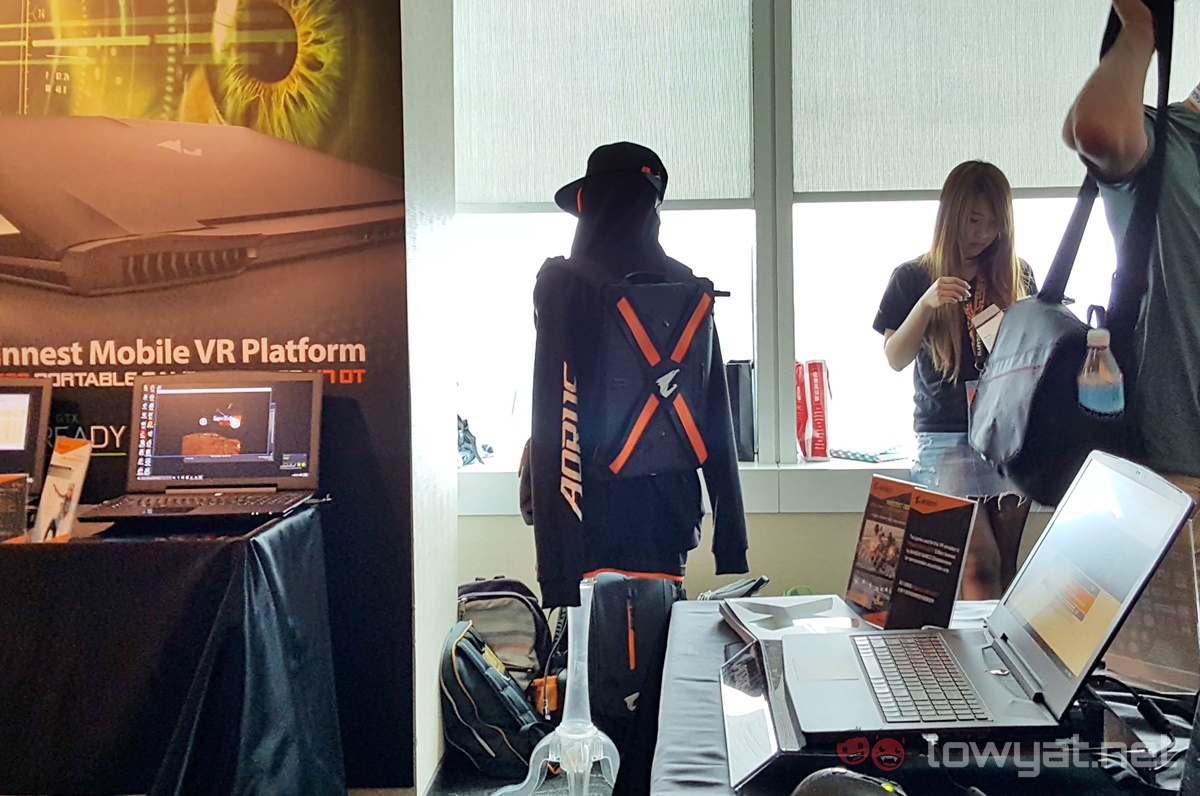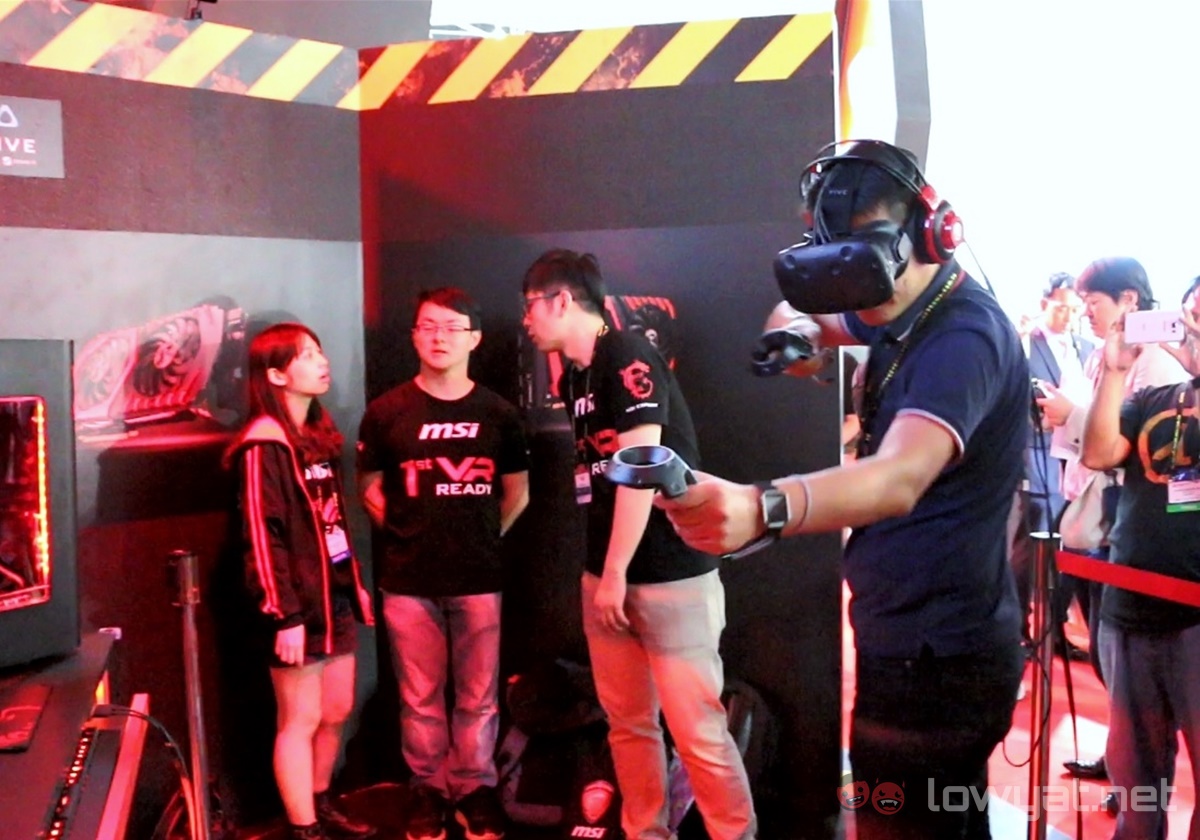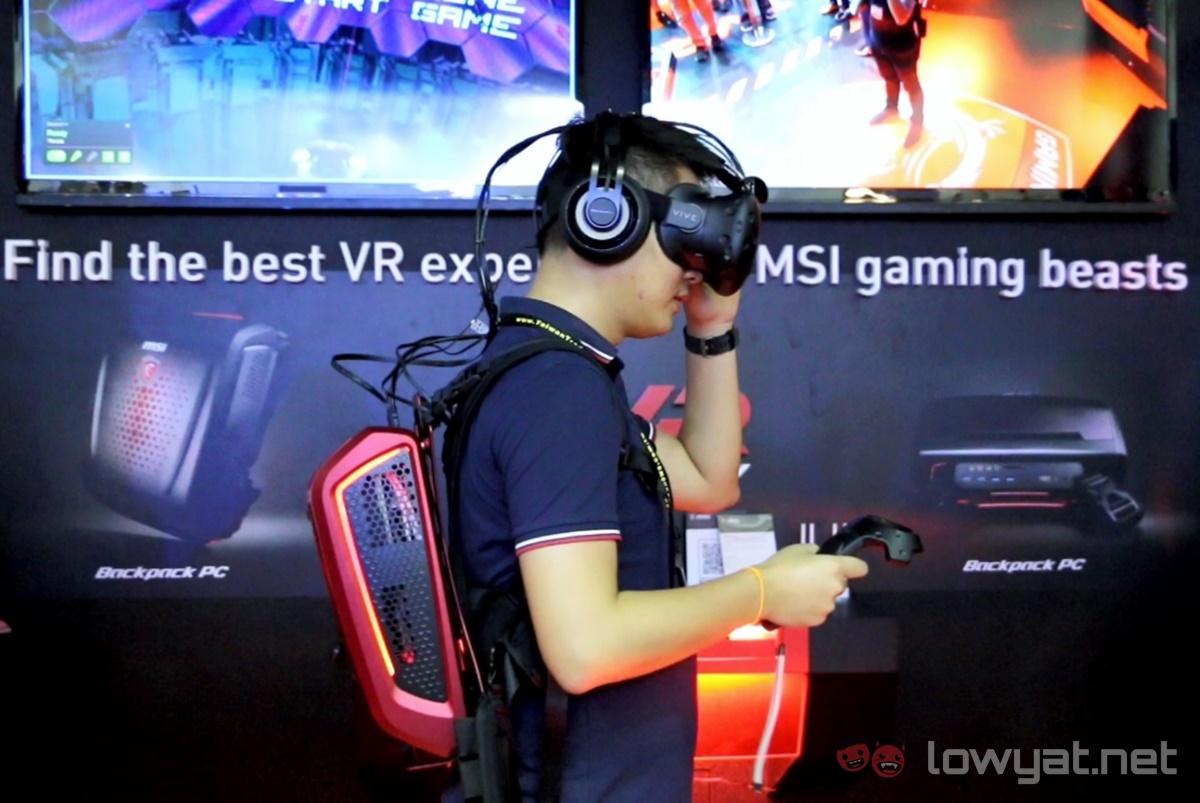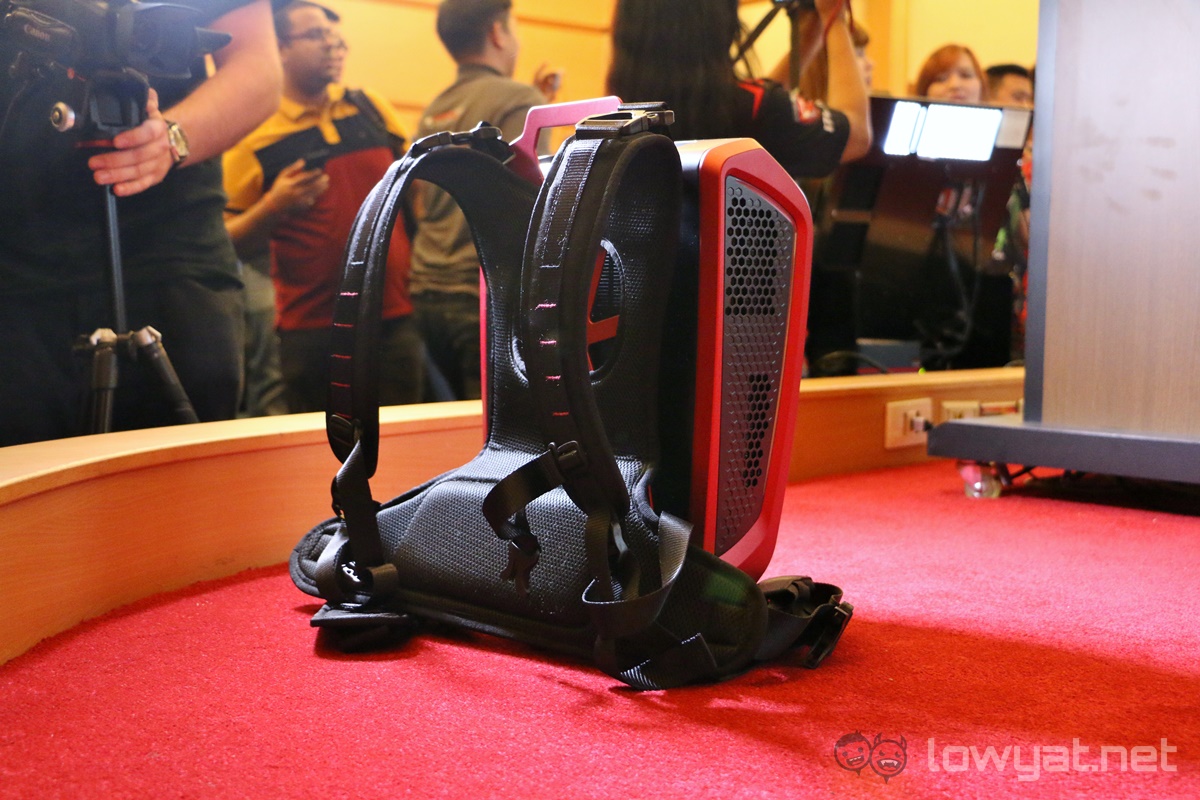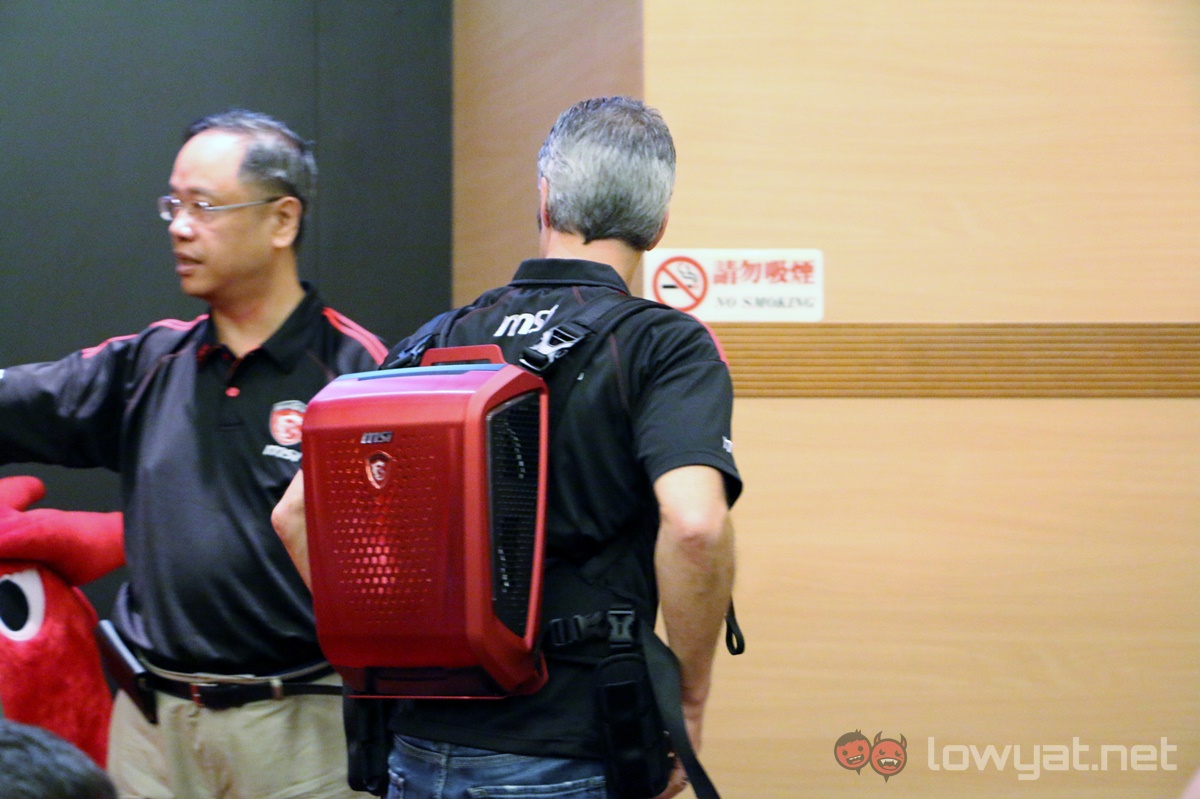Virtual reality gaming was the big thing at this year’s Computex, the world’s largest PC trade show. It is a huge sign of things to come in the industry, and perhaps unsurprisingly, the products that stole the show were “backpack PCs”, full-fledged VR-ready gaming machines strapped to your back.
At Computex 2016 I was able to try out a few VR gaming solutions, including the MSI Backpack PC, as well as standalone PCs using both the HTC Vive and Oculus Rift VR headsets. After the collective experiences gaming in VR over several days at Computex, I’m convinced that the highest level of gaming in the future will involve VR at some point.
Currently, VR gaming has several limitations, and unsurprisingly, several announcements at Computex 2016 were squarely aimed at addressing those concerns. The barrier of entry for VR gaming is exceptionally high, as it requires a powerful graphics card such as the Nvidia GeForce 1080 to render seamlessly; AMD announced the Radeon RX 480 that’s “VR-ready” for just $199.
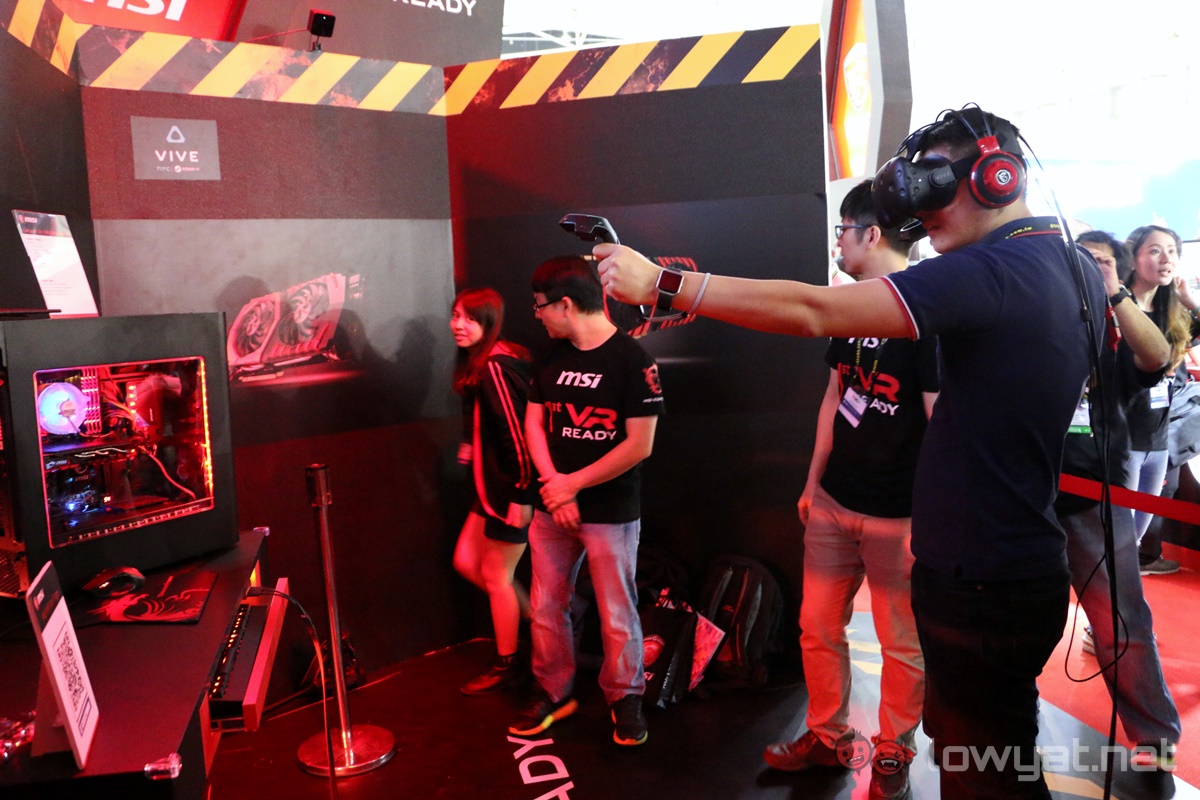
HTC’s Vive VR set may have been released several months ago, but it is clear that HTC’s solution is superior to the Oculus Rift, offering an exceptionally immersive gaming experience with its spatial cameras and intuitive controllers. Virtually every company with a VR-ready product had a demo space with the Vive.
But perhaps the one factor that remains to be solved is that VR gaming still requires you to be tethered to a PC; at each demo station there are at least one assistant to oversee each session to make sure participants do not tangle themselves in the cables while moving about.
MSI’s Backpack PC is built from the ground up to address this issue. It is the first company to announce a backpack PC; HP has a similar product but is still a concept and was not seen at Computex, while Zotac basically inserted some PC components into a canvas backpack. Aorus, on the other hand, had some luggage straps wrapped around its X7 gaming laptop and called that a backpack PC.
The VR Gaming Experience
After a few sessions gaming on the Oculus VR headset, I thought it was pretty cool at first; the sensation of being able to see things in 360 degrees was something new for me in gaming. But, two issues cropped up: parts of the lens had a tendency of fogging up, and the immersive experience was hindered somewhat because of the headset’s limitations of not including physical movement.
On top of that, I found that the resolution of the headset’s display was not as sharp as I’d hoped; my slight short-sightedness ensured I had a similar experience with the Samsung Gear VR.
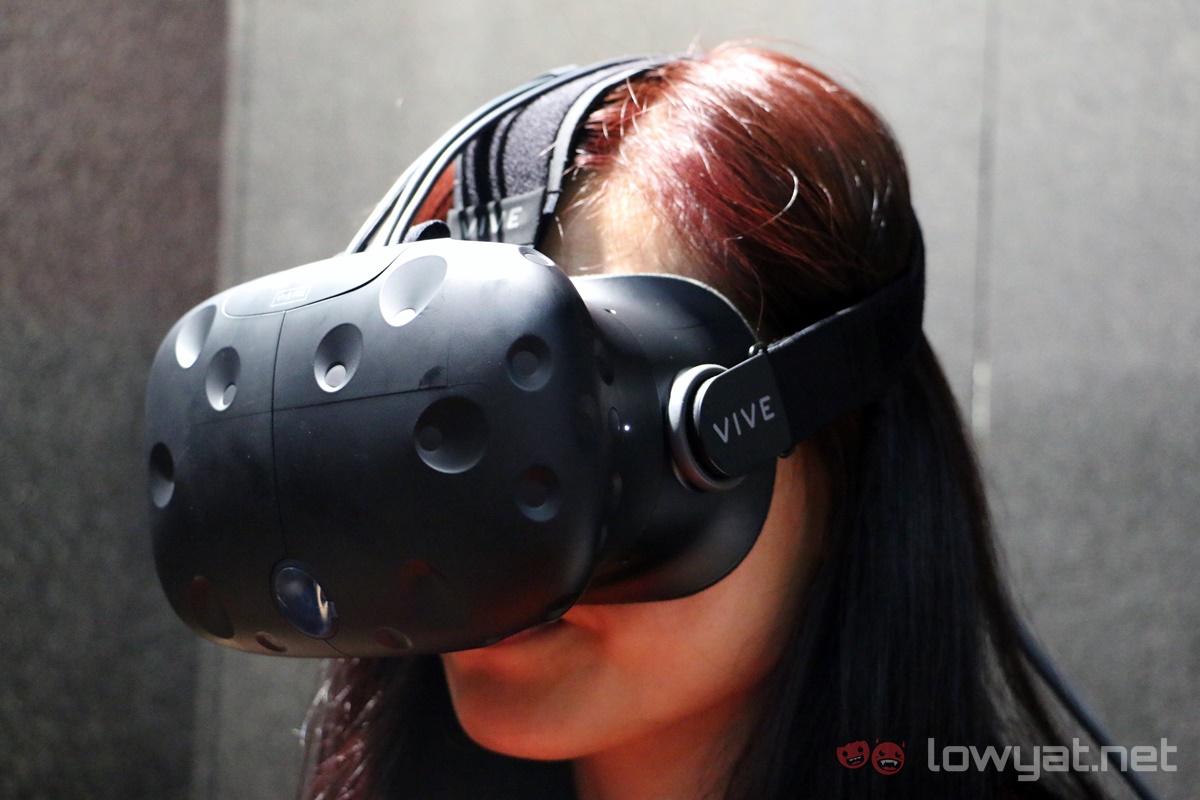
These observations were further enhanced when trying out the HTC Vive. The controllers and cameras that capture your physical movements completely changed the way games can be created. But the best part was how the Vive was very forgiving for those with poor vision.
At each of the four demos I tried using the HTC Vive, every session was immersive, and the controls were accurate and intuitive, and at no point in time did the lenses fog up or created any vision issues even with my poor eyesight.
In fact, I even found myself completely engrossed in a bow-and-arrow shooting game in one of the sessions with the Vive. It was my first time trying the Vive controllers, but I had zero issues adapting to the controls, and I think I may have cursed too loudly when I missed a shot – I’m not sure, because I couldn’t hear myself at that point.
Gaming With a Backpack
Coupled with the Vive, the MSI Backpack PC created the most immersive VR gaming experience I had at Computex. We were told that the final design is still being finalised, especially with the straps’ design, but as it is, the current design was actually quite comfortable – you just need to adjust the straps to make sure the bulk of the weight goes to your lower back (you know, like a normal backpack).
When strapped properly, the backpack’s 4.5kg weight is actually very manageable, and vanishes to the background the moment you begin playing. That said, I’m used to carrying a backpack with a laptop, DSLR, and various accessories for work, so 4.5kg isn’t really an issue for me.
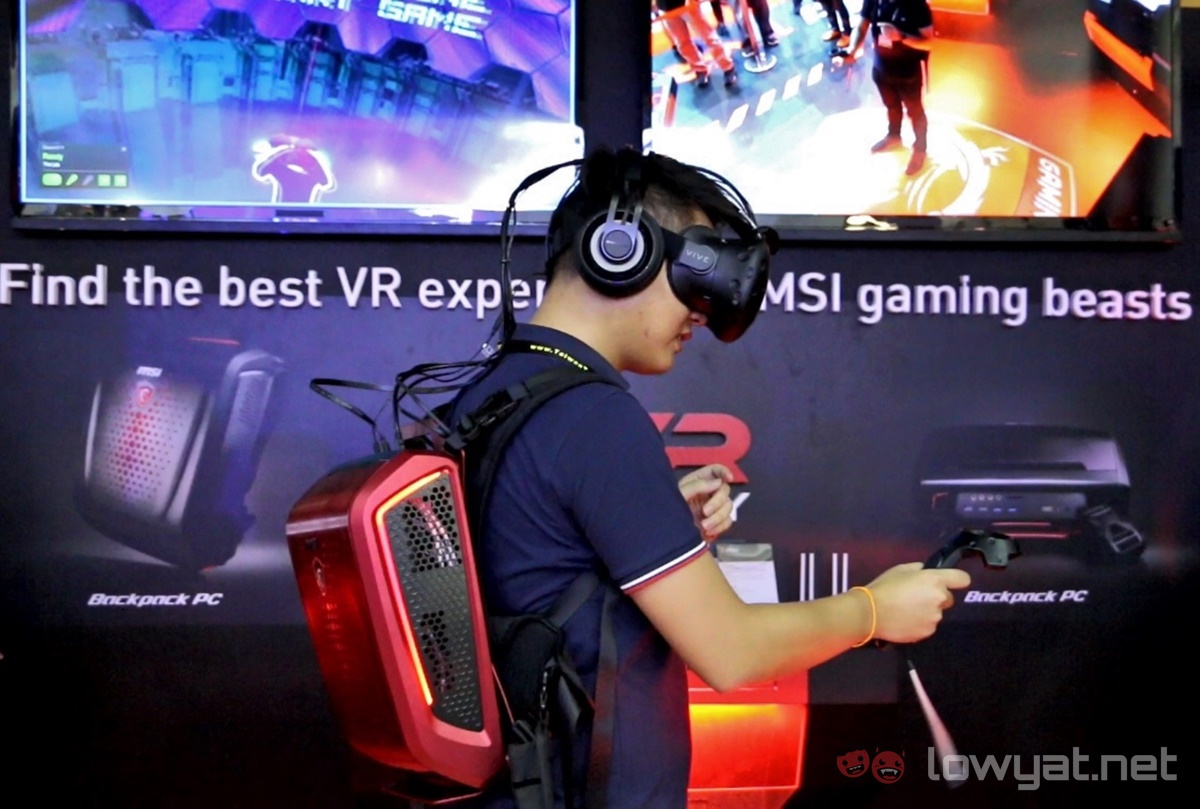
Since you’ll be playing with a pair of headphones, the sounds of the Backpack PC’s cooling fans won’t be too much of an issue – they actually sound the same as when a gaming laptop is under load. Heat is directed towards the left side of the backpack, though it is towards a 7 o’clock direction so you won’t feel anything even when your hand is at your sides.
The backpack also has holsters on either side to put the Vive controllers. The metal shell ensures the airways are always exposed, while the metal feet at the bottom also means you can securely use it as a desktop PC.
When playing with the Vive, you’ll see the perimeters of your gaming space in the shape of a translucent blue wall, so you’ll always know to stay in position (though some games are so immersive that this is easier said than done). But, the Backpack PC eliminates the worry of tripping over the Vive’s cables attached to your very expensively assembled PC.
MSI says that the Backpack PC will last for up to 90 minutes of VR gaming on a single battery charge. That sounds like par for the course for a gaming laptop, but MSI also mentions that usually, those playing VR games will likely game for less than that because of how tiring it can get. After about five minutes or so (due to the long queue at the demo station), I can’t say it was tiring, but I did feel a little tired at a longer session at another MSI VR demo with the Aegis X desktop.
An Expensive Temporary Solution
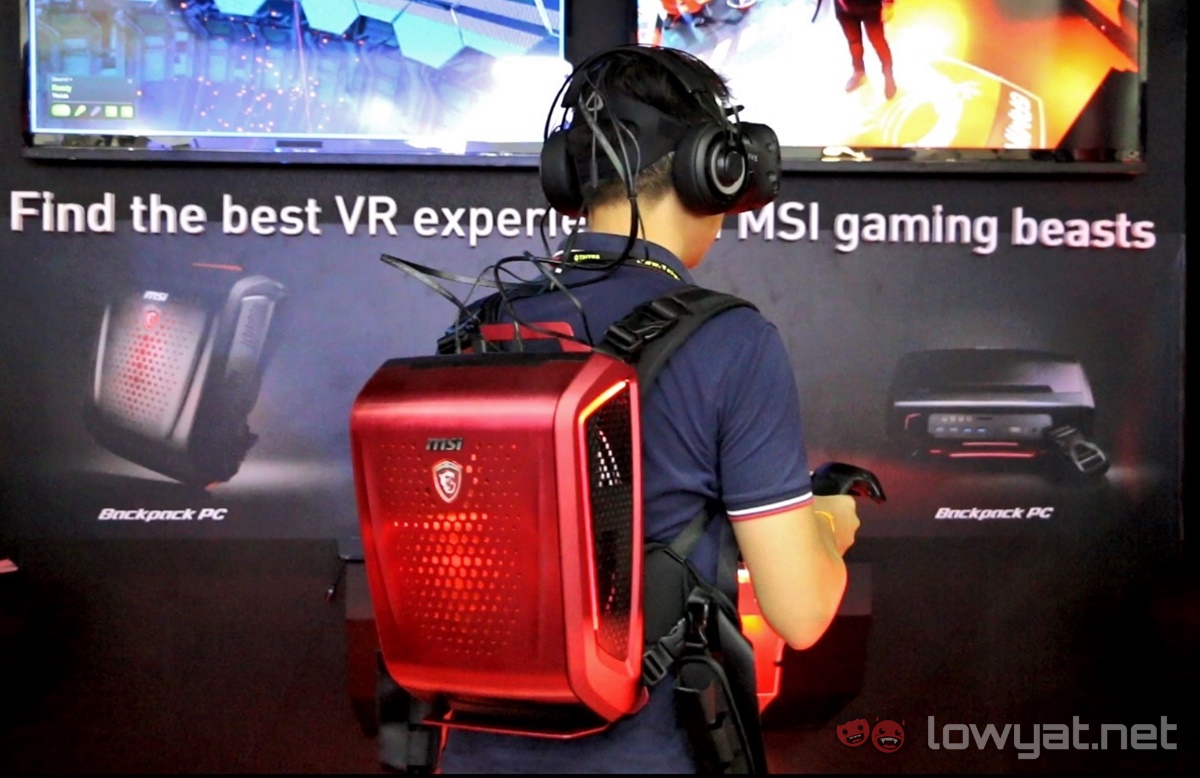
Okay, “temporary” is rather strong to describe the MSI Backpack PC and its contemporaries. MSI created a product that addressed a critical aspect of VR gaming, and for the most part it does that very well. But I can’t help but think that eventually, VR gaming will be a fully wireless one. In fact, I’m sure that that is the future of VR gaming.
All that’s left to address is of course, the ability to transfer massive amounts of data wirelessly over short distances. VR gaming requires the GPU to render hundreds of frames per second, and a wireless solution cannot result in skipped frames or screen tearing – both result in a sub-par VR experience.
Li-Di technology is one promising area, but that is a solution that is still years away. That essentially gives products like the Backpack PC some longevity – the fact that MSI made it easy for users to upgrade the internal hardware further enhances its long-term usability.
That said, the Backpack PC’s price will determine how attractive the product will be. Early adopters will have no issues investing in a set with the HTC Vive, but MSI could make it more attractive for general gamers by offering the Backpack PC as a barebones machine. Since it runs on a desktop-grade GPU, gamers can even plug out their current GPUs and slot them inside the Backpack PC (just make sure it is VR-ready).
Regardless, VR gaming remains expensive overall. In the coming years it will slowly trickle downwards, but I think this is an experience everyone should try today. MSI and other gaming companies will likely host some VR gaming demos in Malaysia, especially if (or when?) HTC makes the Vive commercially available. The queue may be long when that happens, but it certainly is an experience worth lining up for.
Follow us on Instagram, Facebook, Twitter or Telegram for more updates and breaking news.


